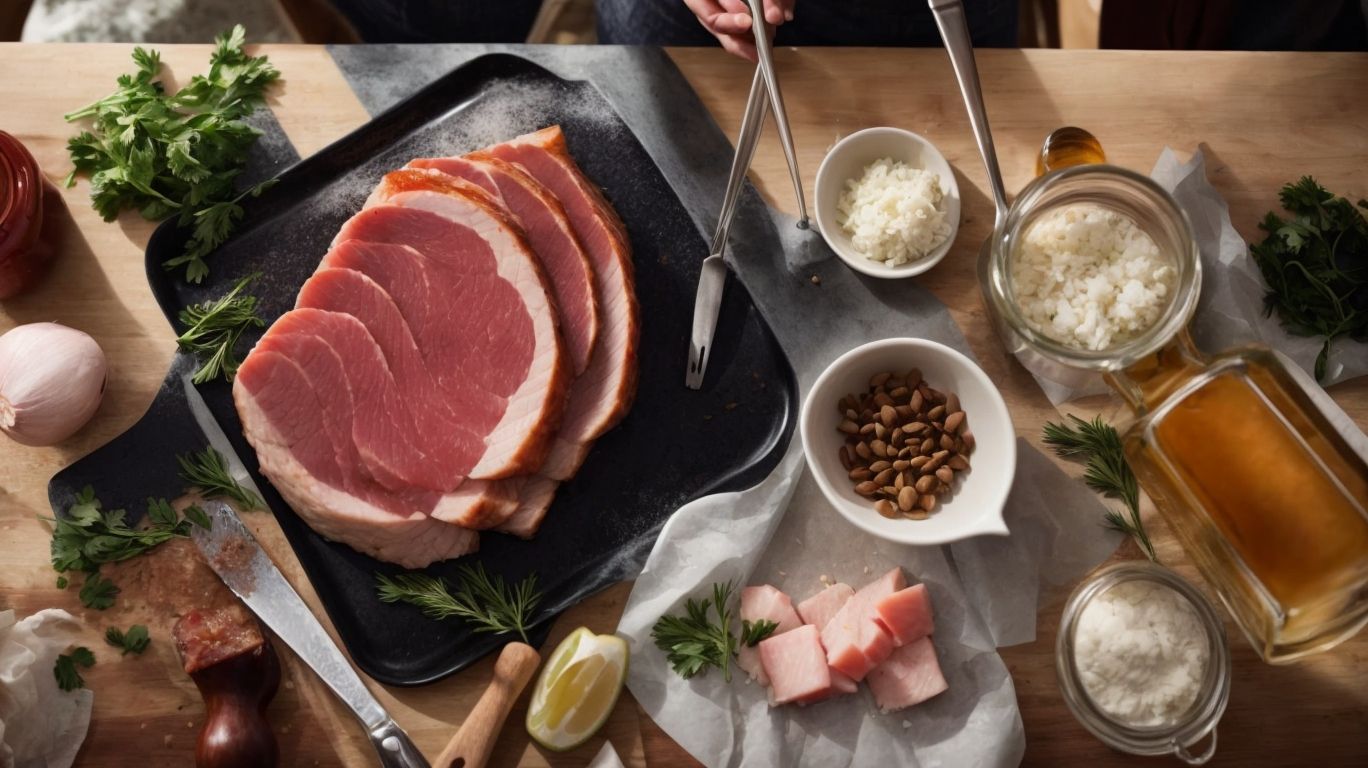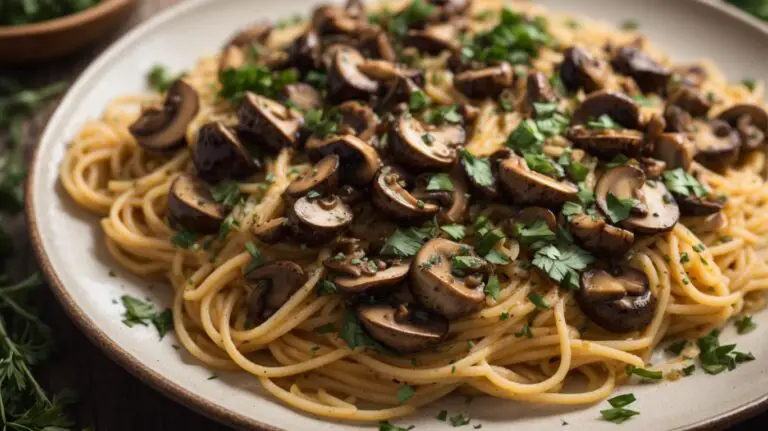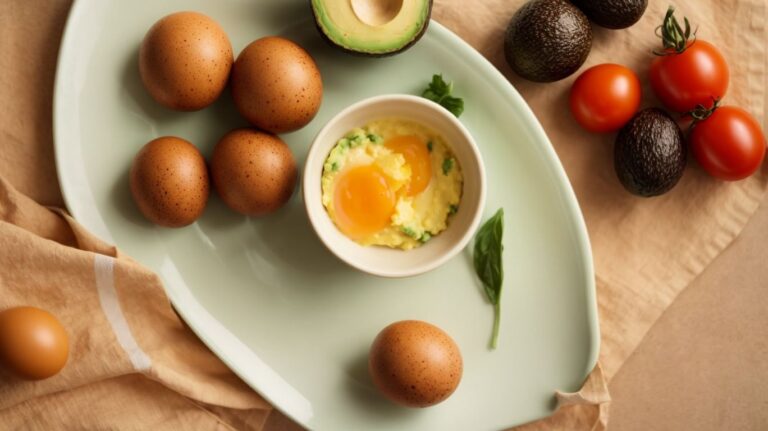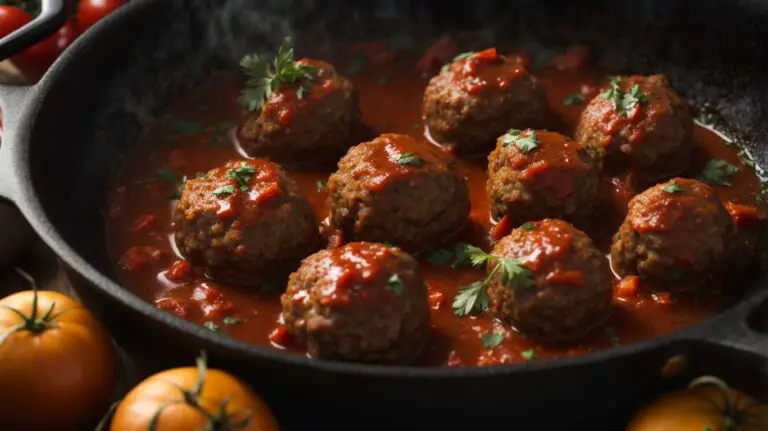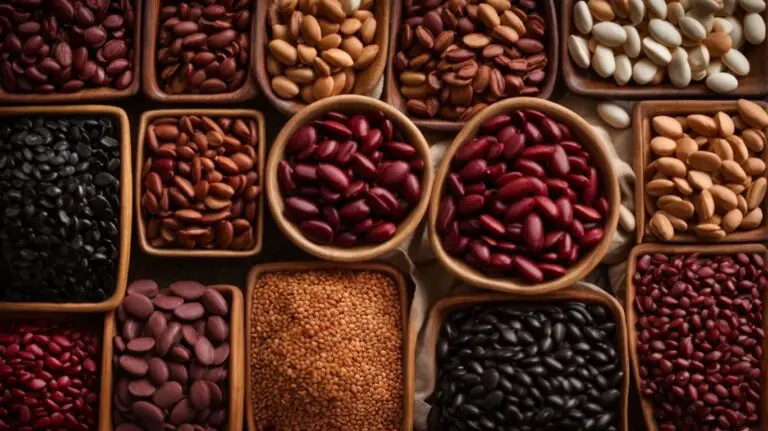How to Cook Gammon?
Are you a fan of savory and succulent gammon but unsure of how to cook it to perfection?
In this article, we will explore everything you need to know about preparing, cooking, and serving gammon.
From the differences between gammon and ham to the best ways to cook it in the oven or on the stove, we’ve got you covered.
Get ready to impress your family and friends with delicious gammon dishes with the help of tips from culinary expert Chris Poormet.
Key Takeaways:
About Chris Poormet
Chris Poormet, the proud owner of Poormet.com, is an accomplished culinary blogger who has secured the prestigious title of Culinary Blogger of the Year. With a background as a celebrated chef excelling in food photography, Chris Poormet has garnered a loyal following by sharing a variety of delectable recipes and insightful tips on the blog.
Known for his exceptional skills in capturing the essence of dishes through his lens, Chris Poormet infuses his culinary creations with an artistic touch that entices both amateur cooks and seasoned food enthusiasts. The engaging blog content not only features mouth-watering recipes but also provides valuable cooking techniques, ingredient insights, and meal-planning suggestions. With his distinctive style and attention to detail, Chris Poormet’s blog serves as a favorited tool for anyone looking to elevate their culinary skills and expand their gastronomic horizons.
What is Gammon?
Gammon, a type of ham derived from the hind legs of a pig, is a versatile meat that can be enjoyed in various culinary preparations. It can be distinguished by its succulent texture and rich flavor profile, with options available in smoked and unsmoked varieties.
Smoked gammon offers a robust, smoky flavor, adding depth to dishes like quiches, pies, and casseroles. On the other hand, unsmoked gammon provides a milder taste, making it ideal for pairing with sweet glazes like honey or pineapple. This meat is popularly cooked for festive occasions, such as Christmas or Easter, and is often baked or boiled for tenderness. Gammon steaks are also a common choice for grilling or pan-frying, served with an array of accompaniments like fried eggs, pineapple rings, or a parsley sauce.
What is the Difference Between Gammon and Ham?
Understanding the distinction between Gammon and Ham is essential for culinary enthusiasts. While both originate from the same part of the pig, gammon is typically sold raw and requires cooking, whereas ham is cured or smoked and can be consumed without additional preparation.
In terms of the preparation process, gammon is usually a joint that needs to be cooked before consumption, making it a versatile ingredient for a variety of dishes. On the other hand, ham undergoes a curing process, which can sometimes involve smoking, imparting it with a distinct flavor profile that sets it apart from gammon.
- Gammon tends to have a slightly milder taste compared to the saltier notes often found in ham. The texture of gammon is firmer and leaner, making it suitable for roasting or grilling to bring out its flavors.
- Conversely, ham is known for its rich, savory taste, and slightly tender texture, making it a popular choice for sandwiches, salads, and charcuterie boards. It pairs well with various glazes and seasonings to enhance its natural sweetness.
How to Choose the Best Gammon?
Selecting the finest Gammon for your culinary creations involves considerations such as assessing the cooking time, examining the raw meat’s quality, determining the weight, and evaluating the presence of bones for added flavor.
When looking to choose a high-quality Gammon, it’s essential to consider the cooking time as different cuts will require varying durations to reach optimum tenderness.
A crucial factor is evaluating the raw meat’s quality to ensure that you’re starting with the best possible ingredient.
Determining the weight of the Gammon is important as it impacts portion sizes and overall cooking times.
Bones in Gammon not only add depth of flavor but also affect the cooking process, so understanding how to leverage them in your dish can significantly enhance the final result.
Preparing Gammon for Cooking
Before embarking on the culinary journey with Gammon, it is vital to prepare the meat meticulously. This involves exploring various methods such as stock preparation, skin removal, and creative uses for leftovers, ensuring a flavorful outcome.
Stock preparation is crucial as it infuses the Gammon with rich flavors. Begin by simmering aromatics like onions, carrots, and herbs in water. Add the Gammon joint, allowing it to cook slowly until tender. Skinning the Gammon is essential to reduce excessive saltiness and enhance the dish’s texture.
For innovative approaches with leftovers, consider dicing the cooked Gammon for salads, omelets, or as a topping for pizzas. This not only reduces waste but adds a delicious smoky flavor to your dishes.
Should Gammon be Soaked Before Cooking?
The age-old question of whether Gammon should be soaked before cooking has intrigued many culinary enthusiasts. Some advocate for soaking the meat in water to reduce saltiness, while others prefer alternative methods to achieve the desired flavor profile.
Those in favor of soaking Gammon argue that submerging the meat in water helps draw out excess salt, resulting in a milder taste. This process can be particularly beneficial for individuals watching their salt intake or sensitive to high sodium levels. Critics of this practice claim that the flavor loss during soaking outweighs any potential salt reduction benefits, leading them to seek other ways of flavor modification.
How to Remove Excess Salt from Gammon?
Dealing with excess salt in Gammon can be a culinary challenge that requires adept handling. Boiling the meat in water is a common method used to extract saltiness, while incorporating flavorful glazes like maple or mustard can further enhance the taste profile.
When boiling Gammon, ensure that the water covers the meat entirely to effectively reduce salt content. This process helps draw out the excess salt, leaving the meat more balanced in flavor. After boiling, consider applying a thick layer of maple or mustard glaze to add a delightful sweetness or tang that complements the Gammon’s smoky richness. By incorporating these flavors, you can create a harmonious balance that counters the initial saltiness while elevating the overall taste experience.
Cooking Gammon in the Oven
Cooking Gammon in the oven is a classic culinary approach that yields succulent and flavorful results. The key to achieving perfection lies in mastering the ideal roasting temperature, applying a delectable glaze, and expertly wrapping the meat in foil for optimal cooking.
In terms of creating a mouthwatering glaze for your Gammon, you can experiment with a variety of ingredients like honey, mustard, brown sugar, or cloves to impart a rich, caramelized flavor profile to the meat.
It is crucial to keep a close eye on the cooking times to prevent overcooking, as Gammon can quickly turn dry if left in the oven for too long.
To ensure a moist and tender outcome, many chefs recommend periodically basting the Gammon with its flavorful juices during the roasting process, enhancing both taste and texture.
What is the Best Temperature to Cook Gammon?
Determining the optimal temperature for cooking Gammon is a critical aspect of achieving a delectable outcome. Roasting the meat at the right temperature not only ensures thorough cooking but also facilitates the absorption of flavorful glazes, enhancing the taste profile.
When selecting the ideal temperature for your Gammon, it’s essential to consider the type of result you’re aiming for. Lower temperatures generally lead to a more tender and juicy end product, while higher temperatures can create a crispy exterior. Adjusting the roasting temperature based on your preferences can make a significant difference in the texture and overall mouthfeel of the meat.
Controlling the temperature also plays a crucial role in how well the glaze adheres to the Gammon. The right temperature allows the glaze to caramelize beautifully, creating a mouthwatering finish that complements the meat’s flavor perfectly.
How Long Should Gammon be Cooked?
Determining the precise cooking time for Gammon ensures that the meat is cooked to perfection, offering a delightful dining experience. By calculating the optimal duration based on the meat’s weight and desired doneness, you can achieve succulent results that retain moisture and flavor.
One crucial aspect to consider when calculating the ideal cooking time for Gammon is the cooking method. For example, if you are roasting Gammon in the oven, the heat distribution will impact the cooking time. The thickness of the cut plays a significant role; thinner slices will cook faster than thicker ones. Adjusting the cooking time based on these variables ensures that you end up with a dish that is neither undercooked nor overdone.
What is the Best Way to Glaze Gammon?
Enhancing the flavor profile of Gammon through a delectable glaze is a culinary art that elevates the dining experience. Whether opting for traditional choices like maple or mustard glazes or exploring alternative flavor combinations, selecting the best glazing method is key to achieving gastronomic excellence.
In terms of applying the glaze, there are a few key steps to keep in mind. First, ensure that your Gammon is cooked to perfection before adding the glaze. Then, using a brush or baster, generously apply the glaze over the surface of the meat, making sure to cover it evenly. Once applied, place the Gammon back in the oven to caramelize the glaze, creating a deliciously sticky and flavorful coating.
Experimenting with different flavor profiles can take your Gammon to new culinary heights. Consider infusing your glaze with spices like clove or ginger, or perhaps adding a hint of citrus zest for a refreshing twist. The key is to balance the sweetness, acidity, and savory elements to create a harmonious blend that complements the rich taste of the Gammon.
Cooking Gammon on the Stove
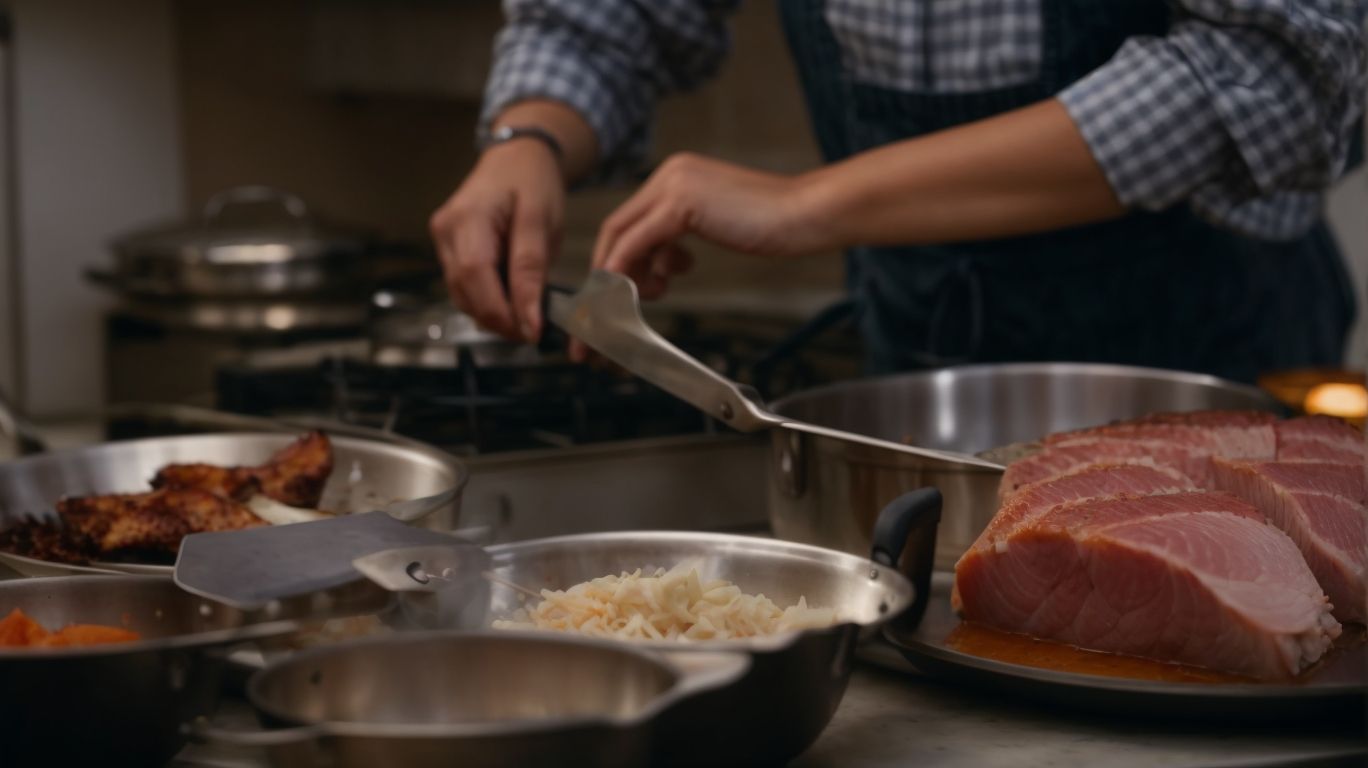
Credits: Poormet.Com – Joe Wilson
Cooking Gammon on the stove offers a convenient alternative to traditional oven methods, allowing for versatile culinary preparations. Whether boiling the meat for tenderness or pan-frying slices for a crispy finish, mastering the stovetop cooking technique opens up a world of flavorful possibilities.
For those seeking a tender and juicy result, simmering Gammon in a fragrant stock can infuse it with rich flavors. On the other hand, pan-frying thin slices on a sizzling skillet provides a delightful contrast, giving the meat a caramelized and slightly crispy texture.
Experimenting with various stocks, such as a savory beer-based broth or a sweet apple juice infusion, can add depth and complexity to the dish, tailoring it to individual tastes. Incorporating herbs and spices during the cooking process can further elevate the flavor profile of the Gammon.
How to Boil Gammon?
Boiling Gammon is a fundamental cooking technique that yields tender and juicy results ideal for various culinary applications. By simmering the meat in water infused with aromatic ingredients like carrots, you can elevate the flavor profile and create delectable dishes that delight the palate.
When preparing Gammon, the key lies in selecting high-quality meat with a good marbling of fat, as this ensures a moist and flavorful outcome. To start, place the Gammon joint in a large pot and cover with water. Add in whole carrots, onions, peppercorns, and a bay leaf to the pot to infuse the meat with an aromatic essence.
Bring the water to a gentle simmer, allowing the Gammon to cook slowly over a low heat. This gradual cooking process helps the meat to retain its natural juices, resulting in a succulent texture.
How to Pan-fry Gammon?
Pan-frying Gammon introduces a delightful crispiness and depth of flavor to this versatile meat, offering a quick and convenient cooking method.
Mastering the art of pan-frying Gammon involves selecting the right cuts, ensuring proper seasoning, and achieving the perfect sear for optimal taste and texture. To enhance the overall culinary experience, consider options for glazing with ingredients like honey, mustard, or brown sugar, adding a sweet and savory twist. Exploring the technique of grilling the Gammon after pan-frying can elevate the dish by imparting smoky notes and additional charred flavor nuances.
Serving and Storing Cooked Gammon
Successfully serving and storing cooked Gammon is crucial to preserving its quality and flavor for future enjoyment. Pairing this delectable meat with complementary side dishes enhances the dining experience, while implementing proper storage practices ensures the longevity and freshness of leftover portions.
One should aim to choose side dishes that balance the richness of Gammon, such as creamy mashed potatoes, steamed vegetables, or a zesty apple chutney. These pairings not only provide a contrast in flavors but also elevate the overall meal.
When storing leftovers, it’s advisable to wrap the Gammon tightly in foil or store it in an airtight container to prevent it from drying out. For creative uses, consider incorporating leftover Gammon into omelets, sandwiches, or salads for a delightful twist on classic dishes.
What are Some Side Dishes That Go Well with Gammon?
Exploring the array of side dishes that complement Gammon can elevate the dining experience with diverse flavor profiles and textures. From classic accompaniments like carrots to indulgent options such as soufflés, selecting the ideal side dishes enhances the overall enjoyment of the Gammon meal.
For those seeking a balance of freshness and sweetness, consider serving a crisp apple and walnut salad alongside the savory Gammon. The combination of the nutty crunch and juicy tang of the apples creates a delightful contrast to the rich flavors of the meat.
Alternatively, opt for a creamy cauliflower gratin infused with sharp cheddar cheese to add a luxurious touch to your Gammon dish. The creamy texture and cheesy indulgence pair perfectly with the salty-sweet profile of the ham.
For a unique twist, why not try grilling zesty pineapple slices to bring a tropical flair to your Gammon feast? The caramelized sweetness of the pineapple complements the smoky notes of the ham, offering a refreshing burst of flavor.
How to Store Leftover Gammon?
Effectively storing leftover Gammon ensures its longevity and quality for future culinary endeavors.
One effective method for maintaining the moisture and tenderness of leftover Gammon is to store it in a flavorful stock. This prevents the meat from drying out and enhances its juiciness when reheated. Consider using a homemade stock infused with aromatic herbs and spices to add depth of flavor to the stored meat. You can also freeze the leftover Gammon in stock to create a ready-to-use base for soups, stews, or casseroles in the future.
Frequently Asked Questions
What is gammon and how do I cook it?
Gammon is a type of cured ham that is usually sold in a large joint. To cook gammon, simply place the joint in a large pot, cover with water, add any desired flavorings, and simmer for 20 minutes per pound.
Can I cook gammon in the oven?
Yes, cooking gammon in the oven is also a popular method. Simply place the joint in a roasting pan, add any desired flavorings, and bake at 350 degrees Fahrenheit for 20 minutes per pound.
How do I know when gammon is fully cooked?
The best way to ensure that gammon is fully cooked is by using a meat thermometer. The internal temperature should reach 145 degrees Fahrenheit for safe consumption.
What are some flavorings that go well with gammon?
Some popular flavorings for gammon include cloves, brown sugar, mustard, and honey. You can also add herbs and spices like thyme, rosemary, and black pepper for extra flavor.
Can I use leftover gammon in other dishes?
Absolutely! Leftover gammon is perfect for making sandwiches, soups, and even salads. You can also chop it up and use it as a topping for pizzas or in omelets.
Are there any special tips for cooking gammon?
One tip is to soak the gammon in water for a few hours before cooking to remove excess saltiness. You can also add a splash of apple cider vinegar to the cooking water for added tenderness and flavor.

